Fiscal Year 2013–2014 Annual Report
This Annual Report summary highlights the Missouri Department of Conservation’s accomplishments and expenditures from July 1, 2013, through June 30, 2014. These accomplishments are based on the Department’s five main goals. Not only does this summary highlight the accomplishments of the Department, but it emphasizes that Missourians care about conserving forests, fish, and wildlife; that we work with Missourians and for Missourians to sustain healthy forests, fish, and wildlife; that we help people discover nature; that conservation makes Missouri a great place to hunt and fish; and that conservation pays by enriching our economy and quality of life.
Healthy Forests, Fish, and Wildlife
Elk Restoration
The purpose of the Elk Restoration Project was to establish a herd of elk within a pre-determined area of the Ozarks in southeastern Missouri. Relocation began in 2011 and was complete in 2013 with a total of 111 elk from Kentucky released on Peck Ranch Conservation Area. The population is currently estimated at 125 animals, with a long-term goal of 400 to 500. The elk are slowly expanding their range and elk viewing continues to be popular with the public. The Department continues to work with landowners in the Elk Restoration Zone to make habitat improvements that benefit elk and other wildlife.
Quail Habitat and Population Monitoring
The Department had three important quail monitoring initiatives in fiscal year 2014. In addition, the state quail plan and regional quail plans were updated. This effort was led by the Quail and Small Game Task Force, and it resulted in a plan that will serve as a guiding document to improve habitat for quail and many species of wildlife into the future, on both public and private land.
- National Quail Monitoring Pilot: Missouri is one of seven states in the nation piloting a habitat and quail population monitoring system for quail focus areas.
- Quail Forever Volunteer Monitoring: In October, the Department partnered with Quail Forever volunteers to survey three additional focus areas around the state: Scott County Quail Focus Area, Stoddard County Quail Focus Area, and Cass County Quail Focus Area.
- Bee Ridge Focus Area Monitoring: The Department joined with private landowners and Quail Forever Whistling Bobs chapter members to monitor quail numbers on the Bee Ridge Focus Area in northeast Missouri.
Feral Hogs
The Department completed the second year of its Five-Year Feral Hog Operational Plan, eradicating 740 feral hogs by regional strike teams. Eleven of these hogs tested positive for hog-related diseases.
Wildfire Suppression
The Department worked with fire departments across the state to suppress 3,843 wildfires that consumed 40,392 acres and upgraded its network of remote automated weather stations with two satellite capable stations. In addition, six 20-person, interagency fire crews were sent to assist with fire suppression in California, Colorado, Utah, Oregon, and Idaho.
Stocking Public Waters
- Urban Fishing: During 2013, 49 urban lakes were managed for fishing. A total of 118,290 keeper-sized fish were stocked in these lakes; this included 68,041 channel catfish and 50,249 rainbow trout.
- Cold-Water Fish Hatcheries: During 2013, cold-water hatcheries stocked 1,501,025 trout. These fish were distributed in four trout parks, 12 stream special management areas, and Lake Taneycomo. There were 302,932 daily adult and 61,277 daily youth tags sold at the trout parks. Anglers purchased 94,063 annual trout fishing permits.
- Warm-Water Fish Hatcheries: During 2013, 10.1 million fish were stocked in public waters. Fish stocked include hybrid striped bass, paddlefish, channel catfish, hybrid sunfish, and walleye.
Hellbender Restoration
The Department’s Shepherd of the Hills Hatchery in Branson and the Saint Louis Zoo’s Ron Goellner Center for Hellbender Conservation, with support from other agencies and private citizens, continue to work together to keep Missouri’s largest salamander from extinction through cutting-edge efforts. Successful captive breeding of Ozark hellbenders occurred at the St. Louis Zoo for the third consecutive year, producing over 600 larvae. In addition, the zoo reared approximately 3,500 larvae and juvenile hellbenders. During the summer of 2013, 150 eastern hellbenders raised at the hatchery and 602 Ozark hellbenders raised at the zoo were released in their native Ozark rivers.
Furbearers and Trapping
During the 2013 fur harvest season, the Department sold more than 10,000 trapping permits, which is a 25-year high. The coyote harvest was the highest in 25 years. Participation by furbearer hunters has been increasing.
Manage Lands in Public Trust
Public Input on Area Plans
Conservation area management plans document strategies for natural resource management and public use on conservation areas. The Department manages 956 properties (totaling nearly 1 million acres) statewide. In fiscal year 2014, staff drafted 128 plans that cover 239 conservation areas and accesses. For the first time, 47 area plans (covering 109 areas) were posted for public comment. Over 500 public comments were collected. Public review of area plans offers an important opportunity for Missourians to comment about the management of a specific conservation area.
Land Management
The Department maintained active management on Department lands for all wildlife and their habitats. This year, staff conducted habitat management on nearly 200,000 acres of public land. In addition, forest and woodland habitat improvements were conducted on 53,660 acres of state land.
State Forest Nursery
The State forest nursery annually grows and distributes close to 3 million seedling trees of more than 60 species. The seedlings include trees and shrubs suitable for reforestation and wildlife-habitat restoration. The seedlings are planted on both public and private lands statewide. The nursery filled more than 9,300 orders involving more than 20,000 packages of seedlings, with a customer satisfaction rate of more than 99 percent.
Sound Financial Accountability
Conservation Goals and Priorities
The Department developed goals and conservation priorities for fiscal year 2014 to serve as an annual strategic plan. The conservation priorities address the most important conservation tion challenges within the next three years. A brochure was prepared about the Department’s mission, vision, goals, and priorities.
Internships Encourage Diversity
The Department began its 11th year of an internship program. Objectives are threefold: expose students to a variety of professional tasks and the Department’s culture, mentor promising students in disciplines in which job candidates are scarce, and attract students with diverse cultural backgrounds to contribute to the Department’s workforce. In fiscal year 2014, students from four colleges and universities interned.
Citizen Involvement/Education
Hunter Education
A new Hunter Education program was launched this year. The two-session format includes knowledge and skills components. The knowledge session can be completed online, by self-study, or in a classroom. The skills session is taught by certified instructors and provides hands-on application of safe hunting practices.
Citizen Input on White-tailed Deer
Eight “Protecting Missouri’s White-tailed Deer” public meetings occurred in fall 2013. A total of 695 people attended these public meetings, and the Department collected nearly 1,500 comments via comment cards and online. Deer Management Open Houses were conducted during summer 2014 to gather public input regarding possible white-tailed deer regulation changes such as season timing, bag limits, and archery methods. Nine of the 14 open houses were conducted during fiscal year 2014, reaching 841 people interested in deer management. There was also a virtual open house on the Department website providing the same information and opportunities to comment.
Fiscal Year 2014 Summary
- County Assistance Payments—$1,689,160 Paid county levee and drainage district taxes, forest cropland payments, in lieu of real estate taxes, and county aid road trust payments. Since 1980, paid more than $19 million to Missouri counties in lieu of real estate taxes.
- Capital Improvements—$14,638,655Constructed, renovated, and repaired fish hatcheries, river accesses, wetlands, shooting ranges, nature centers, and facilities statewide; and acquired land.
- Information Technology—$12,743,449 >Includes information management and technology that supported all computers, software, telephones, and other telecommunications systems. Fisheries—$14,319,678Managed sport fish populations, aquatic biodiversity, and aquatic habitats. Managed 1,025 areas for fishing, and assisted 5,556 landowners with stream and lake management. Stocked about 11.8 million fish in public waters.
- Forestry—$18,854,335Distributed about 3 million seedlings to 9,300 landowners, provided forestry assistance on more than 114,485 acres of private land and to more than 159 municipalities, managed 438,700 acres of public forest, monitored insect and disease threats, and facilitated development of the state’s forest industry.
- Wildlife—$21,345,613Managed more than 163,000 acres of public land. Monitored federally endangered or threatened species. Identified priority geographies to focus investments. Aided guidance and funding for national and international bird conservation. Facilitated about 43,000 hunter trips through managed hunts.
- Outreach and Education—$17,058,239 >About a million people visited nature, education, and visitor centers, and about 170,000 used staffed shooting ranges. More than 550,000 subscribed to the Missouri Conservationist, more than 175,000 subscribed to Xplor, and there were about 7 million visits to MDC’s public websites by more than 4.2 million users. Also provided more than $250,000 in grants to schools and conservation curriculums for schools.
- Private Land Services—$9,111,375Provided 32,437 rural and urban landowner contacts, affected 244,600 acres through technical assistance to landowners, provided habitat management workshops to 31,946, assisted USDA with enrolling 1,685 contracts affecting 149,195 acres through the Wetland Reserve Program (WRP), and paid out $1.71 to Missouri landowners in cost-share and incentives through the Department’s Landowner Assistance Program.
- Protection—$16,991,966Provided wildlife law enforcement in every county as well as resource management, information, education, and public service. Conservation agents contacted approximately 657,000 people, and they coordinated the Share the Harvest program. Conservation agents, along with 998 volunteers donating more than 12,000 hours, conducted more than 1,100 hunter education classes, certifying more than 20,000 students.
- Resource Science—$12,204,839 Monitored the status of Missouri’s fish, forests, plants, and wildlife, recommended conservation actions, evaluated these actions, and reported the results. Tens of thousands of Missourians were contacted to determine their outdoor activities and opinions about conservation programs.
- Regional Public Contact Offices—$2,274,989 Provided regional offices to directly serve Missourians.
- Administrative Services—$13,326,710 Paid for hunting and fishing permit sale systems, fiscal services, purchasing, distribution center, and sign shop. Provided agency-wide postage and printing services, fleet management, vehicle and equipment maintenance, and other agency appropriations.
- Human Resources—$2,559,491Provided the services to recruit, employ, and train employees.
- Design and Development—$14,644,427 >Provided engineering, architectural design, cultural resource review, surveying, and construction, as well as maintenance of conservation areas and facilities.
- Administration—$2,867,828Provided audits, legal counsel, strategic planning coordination, federal reimbursement administration, environmental policy development, public involvement, and river basin management.
Social Media
The Department’s Facebook page has more than 117,000 likes and reaches almost 75,000 people per week who share our information with more than 5.5 million friends. Our Twitter feed has more than 5,000 followers who then pass our tweets along to thousands more. The Department’s YouTube channels contain more than 1,000 videos and average about 100,000 views per month with more than 8.5 million total views. Department online photos through Flickr offer over 1,000 images with more than 2,500 reader photos, which have had more than 295,000 lifetime views. The Department has also recently delved into the world of Google+ Hangouts, providing a new way to reach a more diverse audience.
Habitat-Management Workshops
The Department held or participated in more than 543 habitat management workshops and field days for more than 32,000 private landowners. The workshops focused on management techniques to benefit early successional wildlife such as quail, rabbits, and grassland birds.
Private Lake and Stream Management
Fisheries staff responded to 4,795 requests for watershed, floodplain, riparian corridor, stream, or lake management information and/or technical assistance. Six hundred and fifty-five on-site visits were made and 106 recommendations or management plans were written. On-site work included 137 fish-population surveys, 17 renovations, and 51 fish-kill investigations. Staff conducted 19 stream or lake management workshops for 835 people. Staff also coordinated or participated in 14 active watershed-management projects.
Forest Management for Landowners
The Department provided forest management on-site technical assistance to 1,715 landowners throughout the state, impacting 114,485 acres. Many of these on-site visits resulted in a written management plan. A total of 300 plans covering 27,828 acres were written. In addition, 77 private land timber sales were marked and 232 landowners were referred to a forest consultant.
Landowner-Led Conservation Habitat Cooperatives
The Department and nongovernment organizations provided 45 wildlife and habitat cooperatives with information through workshops and educational meetings in fiscal year 2014.
Listened to Missourians
Part of delivering excellent public service is to listen to and understand Missourians. In fiscal year 2014, there were 124 activities that involved 86,427 people. These included surveys, focus groups, open houses, comment periods, comments to the Regulations Committee, and contacts with the Department’s ombudsman.
Engage Partners At All Levels
Monitoring Forest Health
The Forest Health Program is an effort among the Department and other state and federal agencies to monitor and evaluate forest health and provide information to Missourians.
In fiscal year 2014, staff responded to 3,043 requests for assistance with forest health issues and worked with state and federal partners to develop the Missouri Invasive Forest Pest Plan, which outlines combined state and federal responses to invasive forest insects and diseases in Missouri.
Volunteer Fire Departments
The Department, in cooperation with the U. S. Forest Service, provided $386,938 in grants to 183 volunteer fire departments. Equipment was also provided to fire departments through two federal programs. Through the Federal Excess Property Program, we obtained equipment valued at $16,251. Through the Fire Fighter Program, we obtained equipment valued at $3,337,661.
Share the Harvest
Conservation agents coordinate and support the Share the Harvest program with the Conservation Federation of Missouri, local charitable organizations, and local meat processors. In 2013, approximately 4,489 hunters donated 227,358 pounds of venison to less-fortunate Missourians.
Archery in the Schools
Missouri National Archery in the Schools (MoNASP) is coordinated through the Department and the Conservation Federation of Missouri. MoNASP is an affiliate of the National Archery in the Schools Program and promotes education, self-esteem, and physical activity through the sport of archery to more than 125,000 Missouri students. In the first seven months of the year, 123 schools were added. The sixth annual MoNASP state tournament, held March 2014, drew 1,344 student archers and more than 7,500 observers and supporters.
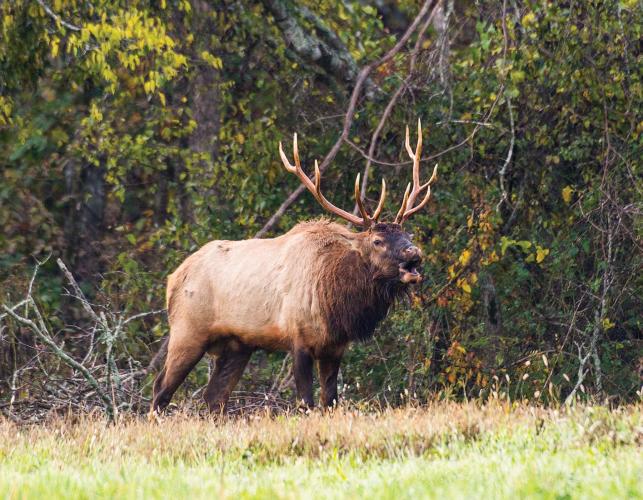
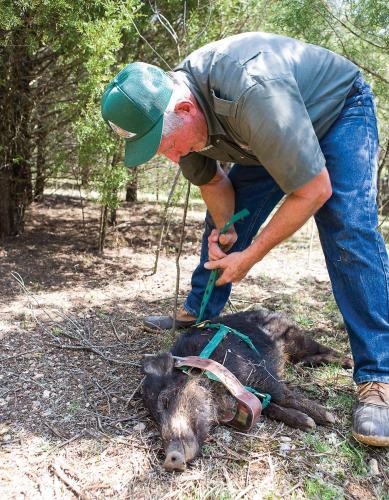
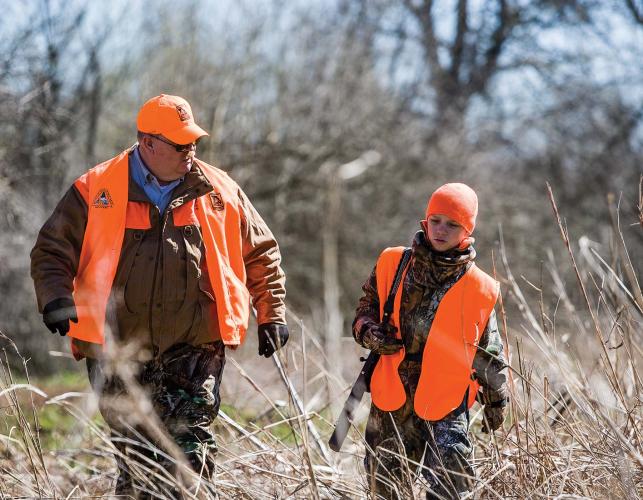

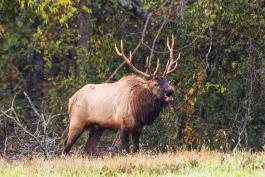
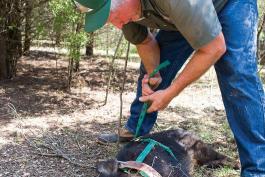
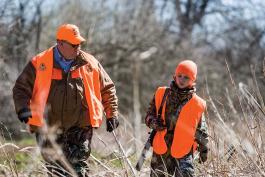

Also In This Issue


And More...
This Issue's Staff
Art Director - Cliff White
Staff Writer/Editor - Bonnie Chasteen
Staff Writer - Jim Low
Photographer - Noppadol Paothong
Photographer - David Stonner
Designer - Stephanie Thurber
Circulation - Laura Scheuler






















